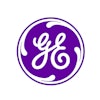Dear CT Insider,
A study that carefully tracked 10 years of radiation dose from a CT lung cancer screening program found the risk of radiation-associated cancers to be extremely low. The results, based on doses calculated for each patient, are good news for a screening exam that needs to attract millions of individuals each year if it is to achieve substantial benefits population-wide.
The dose- and risk-calculation study used software to track radiation dose, which represents an improvement over previous estimates of screening-induced cancers that relied on incomplete data -- or simply averaged doses over the entire population. You'll find the intriguing results in this issue's Insider Exclusive, brought to you as a subscriber before our regular members can access it.
Lung cancer screening could actually use a boost -- or so it appears from the results of another study showing that screening uptake has been disappointingly low. In fact, the percentage of eligible long-term smokers seeking screening is stuck in the low single digits, according to an analysis by the American Cancer Society's Surveillance and Health Services Research team.
Meanwhile, the largest CT lung cancer screening study of individuals in the U.S. Department of Veterans Affairs system to date screened a population with long smoking histories -- but lots of comorbidities too. Administering the program kept the screening team very busy. But did they find many cancers? Click here to learn more.
Finally, an analysis from institutions in Europe and Canada found that screening is cost-effective, particularly if the criteria for screening are very strict. How many pack-years do the investigators say are needed to achieve the most cost-effective screening? Find out here.
In the coronary arteries, a new study found that CT-detected calcium in younger adults is a strong predictor of risk years later. In fact, the presence of any calcium increased the risk of events and death exponentially, the researchers concluded.
How can radiologists increase their chances of detecting the most clinically important findings that CT reveals? By using machine-learning algorithms, of course. Ohio-based investigators developed a deep-learning model that helped them detect critical findings on head CT studies.
We invite you to scroll through the links below for the rest of the news in radiology's main modality -- all here in your CT Community.




















